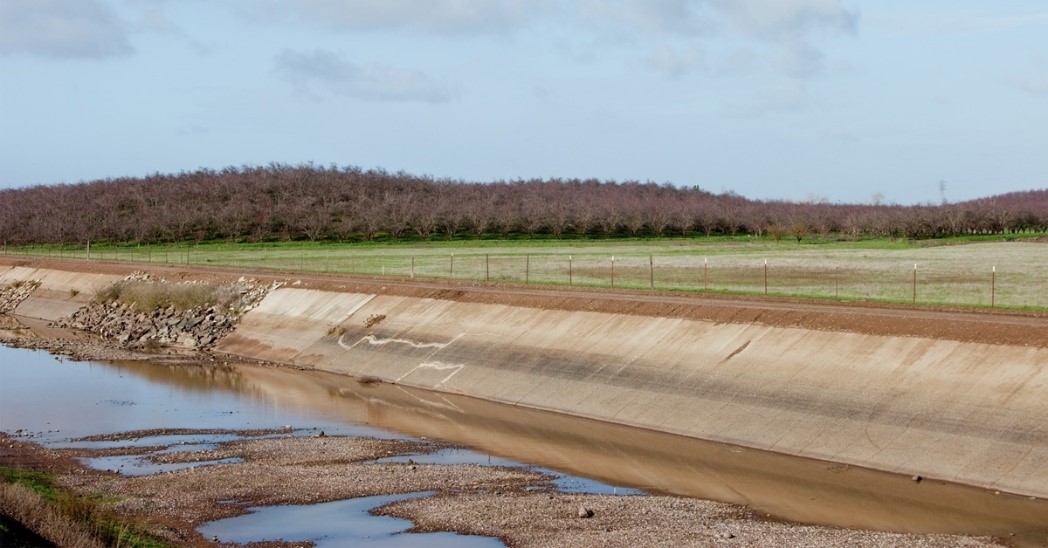Sweeping changes in Central Valley water quality regulations are scheduled for adoption in May — part of a long-term plan to assure safe drinking water for the Valley’s residents, while protecting Valley agriculture from an increasing trend of salt buildup in soils and groundwater.
 For almond growers and other Valley farmers, cities and business, the proposed regulatory changes — commonly known as the “CV-SALTS” plan — would bring a mix of benefits and costs.
For almond growers and other Valley farmers, cities and business, the proposed regulatory changes — commonly known as the “CV-SALTS” plan — would bring a mix of benefits and costs.
Costs would include supporting collaborative efforts to improve community drinking water supplies and planning for improved salinity management.
Promised benefits include improved drinking and agricultural water supplies over time, more flexible permitting and reduced enforcement liability for those who cooperate in the group efforts to manage and improve water quality.
More than 10 years in the making, the proposed regulatory changes are joint recommendations of a large stakeholder group, known as CV-SALTS (www.cvsalinity.org), which includes agricultural representatives, food processors, cities and other water users.
The CV-SALTS recommendations are now captured in a package of proposed amendments to the Central Valley Water Quality Control Board’s Water Quality Control Plan. (More information at www.waterboards.ca.gov/centralvalley/water_issues/salinity/#dsr2018.)
One major goal of the plan is to slow, stop and eventually reverse the buildup of salinity in the valley’s soils and groundwater tables — a problem so serious for farmers that it has historically led to the end of civilizations. A 2009 University of California Davis study — “The Economic Impacts of Central Valley Salinity” — suggested that current salinity problems will cost the state up to $8.7 billion in economic output by 2030, mostly in losses related to agricultural production, with the problem only getting worse over time. The report further suggests that investments in improving the Central Valley salt balance such as investing in a brine line to remove some salts to the ocean, while strategically treating some groundwater aquifers would be costly, but would result in a net benefit over time, by avoiding further damage to California’s agricultural economy.
It is generally acknowledged that it will take decades of expensive planning efforts, followed by billions of dollars in infrastructure investment, to turn the salinity tide and reach a goal of salt balance, allowing a robust agriculture sector to continue in the Central Valley.
Another clear goal of the process — and one that the Regional Board has prioritized for much quicker action — is ensuring action to provide safe drinking water to all Valley residents. The Regional Board proposes doing this by calling for formation of local Management Zones in areas where nitrates from fertilizers and other sources have impacted groundwater.
Management Zones would be responsible for coming up with, then carrying out, plans for providing safe drinking water to all residents in their respective areas. Management Zones are expected to come up with a cost that would be shared among all their residents and businesses, including farmers. While Management Zones would be governed locally and responsible for deciding how to provide drinking water and distribute costs, proposed state legislation known as Senate Bill 623, if passed, would create the Safe and Affordable Drinking Water Fund, expected to provide as much as $140 million in funding to offset these costs, via a combination of taxes that would cover everyone from residential and business water users to farmers purchasing fertilizer. An increased “mill” tax would result in an additional $6 paid for each $1,000 of fertilizer purchased.
Despite the costs that farmers would incur, agricultural coalitions and others have supported the CV-SALTS regulatory reforms because it is expected to lead to a future with more predictability and less liability than if no reforms were adopted. The measures are scheduled to be adopted by the Central Valley Regional Water Quality Control Board at the end of May, with final adoption by the State Water Resources Control Board scheduled for late this year. Management zones for “high priority areas” (areas with the worst groundwater nitrate problems) could be in place by 2020.
Almond farmers are encouraged to follow this developing process. One good strategy for doing so is to pay attention to bulletins and information from grower coalitions under the Irrigated Lands Regulatory Program, who will likely play a role as Management Zones begin to form. Farmers, especially in high-priority nitrate areas (such as in the east side of the San Joaquin Valley and Tulare Lake Basin) should pay close attention to their local process and become engaged as Management Zones begin to form in 2019 and 2020.